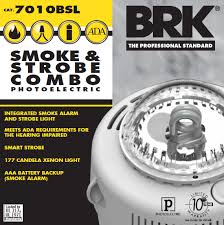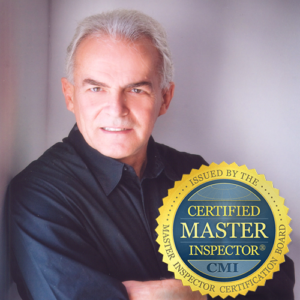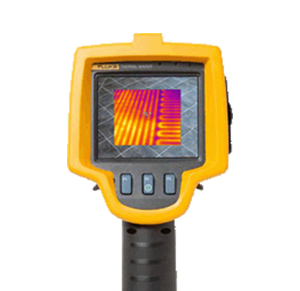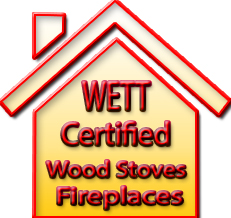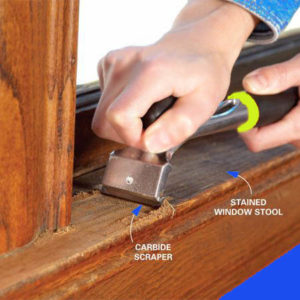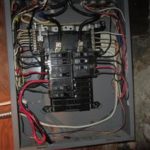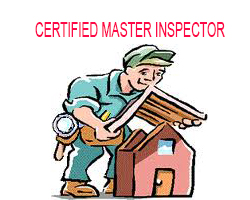Smoke Alarm Information
New Smoke Alarm Requirements as of 2015
Ontario Building Code
3.2.4.22. Smoke Alarms
(1) Except as permitted by Sentence (6), smoke alarms conforming to CAN/ULC-S531, “Smoke Alarms”, shall be installed in each dwelling unit and, except for care, care and treatment or detention occupancies required to have a fire alarm system, in each sleeping room not within a dwelling unit.
(2) At least one smoke alarm shall be installed on each storey and mezzanine of a dwelling unit.
(3) On any storey of a dwelling unit containing sleeping rooms, a smoke alarm shall be installed in,
(a) each sleeping room, and
(b) a location between the sleeping rooms and the remainder of the storey, and if the sleeping rooms are served by a hallway, the smoke alarm shall be located in the hallway.
(4) A smoke alarm shall be installed on or near the ceiling.
(5) Except as permitted by Sentence (6), smoke alarms required by Sentence (1) shall,
(a) be installed with permanent connections to an electrical circuit,
(b) have no disconnect switch between the over current device and the smoke alarm, and
(c) in case the regular power supply to the smoke alarm is interrupted, be provided with a battery as an alternative power source that can continue to provide power to the smoke alarm for a period of not less than seven days in the normal condition, followed by 4 min of alarm.
(6) Suites of residential occupancy are permitted to be equipped with smoke detectors in lieu of smoke alarms, provided the smoke detectors,
(a) are capable of independently sounding audible signals within the individual suites,
(b) except as provided by Sentence (7), are installed in conformance with CAN/ULC-S524, “Installation of Fire Alarm Systems”, and verified in conformance with CAN/ULC-S537, “Verification of Fire Alarm Systems”, and
(c) form part of the fire alarm system.
(7) Smoke detectors permitted to be installed in lieu of smoke alarms as provided in Sentence (6) are not required under Clause (6)(b) to sound an alarm throughout the rest of the building, provided they sound localized alarms within individual suites and otherwise meet the requirements of Clause (6)(b).
(8) If more than one smoke alarm is required in a dwelling unit, the smoke alarms shall be wired so that the actuation of one smoke alarm will cause all smoke alarms within the dwelling unit to sound.
(9) A smoke alarm required by Sentence (1) shall be installed in conformance with CAN/ULC-S553, “Installation of Smoke Alarms”.
(10) Except as permitted by Sentence (11), a manually operated silencing device shall be incorporated within the circuitry of a smoke alarm installed in a dwelling unit so that it will silence the signal emitted by the smoke alarm for a period of not more than 10 min, after which the smoke alarm will reset and again sound the alarm if the level of smoke in the vicinity is sufficient to reactuate the smoke alarm.
(11) Suites of residential occupancy equipped with smoke detectors installed in conformance with CAN/ULC-S524, “Installation of Fire Alarm Systems”, as part of the fire alarm system in lieu of smoke alarms as permitted by Sentence (6), need not incorporate the manually operated silencing device required by Sentence (10).
(12) The sound patterns of smoke alarms shall,
(a) meet the temporal patterns of alarm signals, or
(b) be a combination of temporal pattern and voice relay.
(13) Smoke alarms required by Sentence (1) shall have a visual signalling component conforming to the requirements in 18.5.3. (Light, Color and Pulse Characteristics) of NFPA 72, “National Fire Alarm and Signaling Code”.
(14) The visual signalling component required by Sentence (13) need not,
(a) be integrated with the smoke alarm provided it is interconnected to it,
(b) be on battery backup, or
(c) have synchronized flash rates, when installed in a dwelling unit.
(15) The luminous intensity for visual signalling components required by Sentence (13) that are installed in sleeping rooms shall be a minimum of 175 cd.
Types of Smoke Alarms
There are many types of smoke alarms, each with different features. Alarms can be electrically connected, battery-powered or a combination of both. The combination with a hush feature to reduce nuisance alarms are highly recommended. Smoke alarms commonly use one of two types of technology to detect the presence of smoke in the air:
These alarms consist of a light emitting diode and a light sensitive sensor in the sensing chamber. The presence of suspended products of combustion in the chamber scatters the light beam. This scattered light is detected and sets off the alarm. Photoelectric models are best suited for living rooms, bedrooms and kitchens. This is because these rooms often contain large pieces of furniture, such as sofas, chairs and mattresses which will burn slowly and create more smoldering smoke than flames.
An ionization smoke alarm uses a small amount of radioactive material to ionize air in the sensing chamber. As a result, the air chamber becomes conductive permitting current to flow between two charged electrodes. When products of combustion enter the chamber, the conductivity of the chamber air decreases. When this reduction in conductivity is reduced to a predetermined level, the alarm is set off. This is the most common type of smoke alarm. Ionization models are best suited for rooms that contain highly combustible materials that can create flaming fires. These types of materials include flammable liquids, newspapers and paint related products. We recommend installing this type of smoke alarm in the kitchen where grease fires can occur.
Every manufacturer has these alarms. They can be powered by a 9-volt battery or 3-4 double A batteries or a 10-year sealed lithium battery. In rental units, it’s imperative that the landlord install and provide batteries for these alarms.
These devices use a radio frequency to cause the other alarms to sound when one is activated. This can provide a higher level of security to homes that do not have hardwired alarms.
These devices are wired into the electrical system of the home. In homes built after 1986, only the alarm in the upper level by the sleeping area needed to be hardwired, the other levels could have battery operated devices. These alarms should have battery back up as power outages can render you unprotected if there isn’t one. This is the time when higher hazards exist when people use alternate methods of light and heating. Hardwired alarms also need to be changed after 10 years. These cannot be replaced with battery-operated alarms as this would cause a decreased level of protection and would be a fire code violation.
Homes built with interconnected hardwired alarms are protected with constant notification on all levels. When replacing these alarms make sure that the alarms purchased are compatible with the others in the house. If not they will not signal correctly and reduces level of protection.
Some manufactures have created smoke alarms that have dual sensing systems in them to assist with nuisance alarms. It would require both the smoke sensing device and the fire gas sensing device to activate before an alarm is triggered. These are helpful in homes where the style of cooking creates more smoke that average or where there have been problems with nuisance alarms that cannot be solved by the hush button feature.
SMOKE DETECTORS
A smoke detector is a device that senses smoke, typically as an indicator of fire. Commercial security devices issue a signal to a fire alarm control panel as part of a fire alarm system, while household smoke detectors, also known as smoke alarms, generally issue a local audible or visual alarm from the detector itself.
Smoke detectors are housed in plastic enclosures, typically shaped like a disk about 150 millimeters (6 in) in diameter and 25 millimeters (1 in) thick, but shape and size vary. Smoke can be detected either optically (photoelectric) or by physical process (ionization), detectors may use either, or both, methods. Sensitive alarms can be used to detect, and thus deter, smoking in areas where it is banned. Smoke detectors in large commercial, industrial, and residential buildings are usually powered by a central fire alarm system, which is powered by the building power with a battery backup. Domestic smoke detectors range from individual battery-powered units, to several interlinked mains-powered units with battery backup; if any unit detects smoke, all trigger even in the absence of electricity.
Function
Smoke detectors protect people by notifying them of fire in the home, especially when people are sleeping. They usually provide an audible alarm, and some have a visual alarm consisting of a flashing light.
Ionization Type Detectors
An ionization smoke detector uses a radioisotope, typically americium-241, to ionize air; a difference due to smoke is detected and an alarm is generated. Ionization detectors are more sensitive to the flaming stage of fires than optical detectors, while optical detectors are more sensitive to fires in the early smoldering stage.
The smoke detector has two ionization chambers, one open to the air, and a reference chamber which does not allow the entry of particles. The radioactive source emits alpha particles into both chambers, which ionizes some air molecules. There is a potential difference (voltage) between pairs of electrodes in the chambers; the electrical charge on the ions allows anelectric current to flow. The currents in both chambers should be the same as they are equally affected by air pressure, temperature, and the ageing of the source. If any smoke particles enter the open chamber, some of the ions will attach to the particles and not be available to carry the current in that chamber. An electronic circuit detects that a current difference has developed between the open and sealed chambers, and sounds the alarm.[15] The circuitry also monitors the battery used to supply or back up power, and sounds an intermittent warning when it nears exhaustion. A user-operated test button simulates an imbalance between the ionization chambers, and sounds the alarm if and only if power supply, electronics, and alarm device are functional. The current draw of an ionization smoke detector is low enough for a small battery used as sole or backup power supply to be able to provide power for months or years without the need for external wiring.
Carbon Dioxide Detectors
Carbon monoxide sensors detect potentially fatal concentrations of carbon monoxide gas, which may build up due to faulty ventilation where there are combustion appliances such as heaters and cookers, although there is no uncontrolled fire outwith the appliance.
High levels of carbon dioxide (CO2) may indicate a fire, and can be detected by a carbon dioxide sensor. Such sensors are often used to measure levels of CO2 which may be undesirable but not indicative of a fire; this type of sensor can also be used to detect and warn of the much higher levels generated by a fire. One manufacturer says that detectors based on CO2 levels are the fastest fire indicators, and also, unlike ionization and optical detectors, detect fires that do not generate smoke, such as those fueled by alcohol or gasoline. CO2 fire detectors are not susceptible to false alarms due to particles, making them particularly suitable for use in dusty and dirty environments.
Photoelectric Detectors
Photoelectric detectors have a small light source that normally misses a sensor that is set up out of the target area. Smoke particles deflect the light onto the sensor, creating an alarm. Photoelectric detectors are good at sensing smoky fires.
Not Heat Detectors
Smoke detectors are not heat detectors. High temperatures will not trigger smoke detectors.
Power Source
Smoke detectors require an electric power source from a battery, house voltage, or both. Batteries may be conventional alkaline type that last one to two years, or lithium type that can last 10 years. Battery powered detectors typically have a power indicator light that is permanently on or flashes intermittently. Most units emit a loud chirping sound every few seconds when the battery is low.
120 Volt Systems
Many authorities insist on smoke detectors powered by the house electrical system. These detectors don’t need batteries changed and can be connected to any junction box, like a light fixture. Smoke detectors are not usually on a dedicated circuit, but detectors should never be on a switched part of a circuit, so that they don’t get turned off accidentally.
Battery Backup
Some detectors operate on house power but have battery backup systems. The thinking is that a fire, especially if it’s electrical, may cut power to the detector before it can sound an alarm.
Interconnected Detectors
Many jurisdictions call for smoke detectors to be interconnected, so if one senses smoke, all will sound an alarm. This desirable arrangement is typically only found on newer homes. The interconnection most often uses conventional 120 volt house wiring (typically with 14 gauge, 3-conductor wire), but some are on a low voltage system.
Location
Smoke detector location is a somewhat controversial issue. Everyone agrees there should be at least one detector in each home. There is also agreement that the detector should be near the sleeping area. Some say there should be a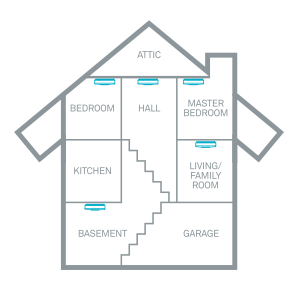

Detectors In Bedrooms?
Some say there should also be detectors in bedrooms, rather than just in the hall ways. This protects people sleeping from a fire that starts in the bedroom. This is particularly helpful if the door is closed, because a detector in the hall may not sound quickly enough to save the person in the bedroom. One other recommendation is to ensure the detectors near sleeping areas are between the escape path and the bedrooms (not at the other end of the hall).
Humidity Can Cause False Alarms
Smoke detectors should not be in or adjacent to kitchens or bathrooms, since high humidity levels can cause false alarms.
Not In Corners
Smoke detectors should be installed on the ceiling because smoke rises. While some say on or near the ceiling, we prefer the detector to be away from wall /ceiling intersections, where dead air may delay activation. We prefer the detector to be near the middle of the room or hall width to help ensure early warning.
Testing Smoke Detectors
Central Station Alarms
Some smoke detectors are connected to central station alarm monitoring facilities. These central stations will respond to an alarm, typically by phoning the home and then sending the fire department, if they don’t get an immediate response from the occupants. This kind of alarm connection typically has the detectors in the home interconnected. These monitored detectors are commonly found in homes with security systems.
Replacing Smoke Alarms
When you replace your smoke alarm you have to maintain the level of protection that was required at time your home was built. If your smoke detectors are all inter-connected you have to maintain that standard of protection. It is recommended that you take your old smoke alarm with you to ensure you buy the proper model. For example you cannot replace a interconnected smoke alarm with a battery operated smoke alarm from Costco.
Hiring a WETT Certified Inspector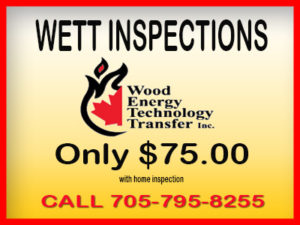

Most insurance companies now require a WETT Certified Inspection on any wood burning appliances prior to issuing a Home Insurance policy. When you buy a new home or change insuarance companies be prepared to provide them with an Inspection Report from a WETT Certified Inspector.
WETT Inspection Barrie is available 7 days a week for your convenience. Call Roger today 705-795-8255
Wett Certified for Over 15 Years
Articles You May Enjoy
Home Inspectors Barrie Ontario
Midland Home Inspector
Home Inspector Midland
Home Buyers Guide
Orillia
WETT Inspection Information
Innisfil WETT Inspections
Flue Pipe Installation
WETT Certified Inspection – Flue Pipes
WETT Certified Inspections for Barrie, Alliston and Orillia
Barrie WETT Inspections
Inspections
Pre-Delivery Inspections
Pre-Listing Inspection
Pricing Policy
Privacy Policy
Types of Inspections
Inspection Areas
Alliston
Angus
Barrie
Innisfil
Orillia
Midland
Penetanguishene
Newmarket
Wasaga Beach
Certifications





















